Subjects:
- General
- Diode as polarity protector and rectifier
- Freewheeling diode
- Technical operation of the diode
General:
A diode is added to many electronic circuits, for example as a rectifier in an alternator or radio, or as a freewheeling diode on a coil. On this page the operation and the various functions are discussed.
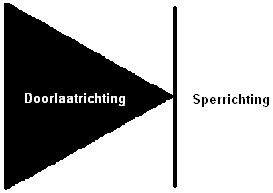
Diode as polarity protector and rectifier:
The diode in a system provides rectification. The flow can only go in one direction and is blocked in the opposite direction. This is made clear in the image below. This is often done to protect components against incorrect connection (as a so-called polarity protector, when switching + and -). If the power supply and ground on a component are reversed, the diodes internally ensure that the voltage is held back to prevent, for example, the printed circuit board from being damaged.
The following figure below shows the basic function. Diode D1 is conductive, D2 is reversed. It's easy to remember that in the direction the arrow points, the current flows. At D1, the current is passed and the lamp reaches L1. The lamp will now light up. The lamp L2 does not, because this diode is reversed. Instead of a lamp as in this example, it can be all kinds of components that can be irreparably damaged when connecting.
Diodes are also used in dynamos for rectification. AC voltage is generated in a dynamo, which must be converted to DC voltage. This is made possible by using multiple diodes (on the diode bridge). For more information about the diodes as rectifiers in an alternator, see the chapter rectifying diodes on the page dynamo.
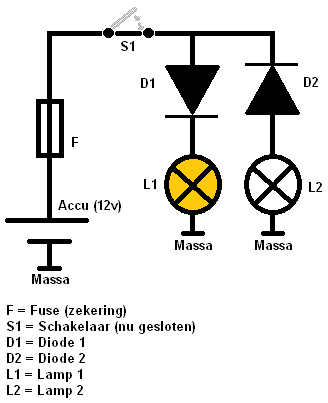
Freewheeling diode:
A high voltage is generated in a coil, such as a coil in an ignition coil. The voltage flowing through the coil is turned on and off by the transistor. However, when the transistor no longer conducts (the current supplied to the base is switched off), the coil is still full of residual energy. The coil is not capable of being 'empty' immediately after switching off the transistor. An induction voltage is always released after switching off, which can be many times higher than the on-board voltage of 14 volts.
The result is that the transistor remains switched on as a result of this induction voltage. Due to this inductance the coil keeps the transistor conducting, even if it is switched off (on the base of the transistor).
To prevent this, a freewheeling diode is added to the system. Now when the transistor switches off, the induction voltage flows through the freewheeling diode to the positive terminal of the coil. Since the induction voltage now no longer reaches the transistor, it remains turned off.
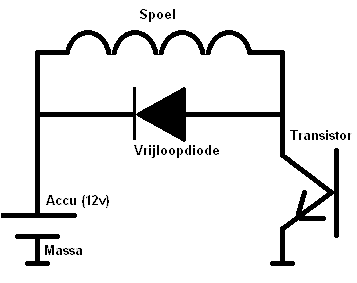
Technical operation of a diode:
A diode consists of a plate of Positive silicon and a plate of Negative silicon. The plates contain holes with positive ions and negative electrons. These move as the flow direction changes.
These P and N silicon plates are placed against each other. The current goes from positive to negative (forward direction). If the flow is from negative to positive (blocking direction), this is stopped. The images below show how this is done:
Blocking direction:
In the picture below, the diode is reversed. For example, the – is now connected to a voltage source and the + to ground. The diode now ensures that no current flows from – to +.
The negative electrons have now all moved to the plate with the Negative silicon. The plate with the positive silicon, so with the positive ions, does not conduct. The “holes” are empty, so that no conduction and therefore no current transfer can take place.
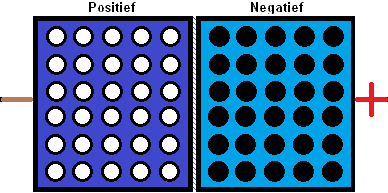
Forward direction:
The current goes from + to -, so in the picture from left to right. The positive electrons and the negative electrons are mixed. The holes at P are now filled by the negative electrons, so a conductive effect is created (the forward direction). There is, however, a loss of voltage, because a hindrance still occurs (the passage is not completely clear). This voltage is called the diffusion voltage and is always about 0,7 volts.
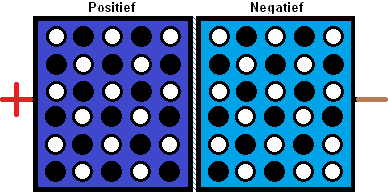
Related pages:
